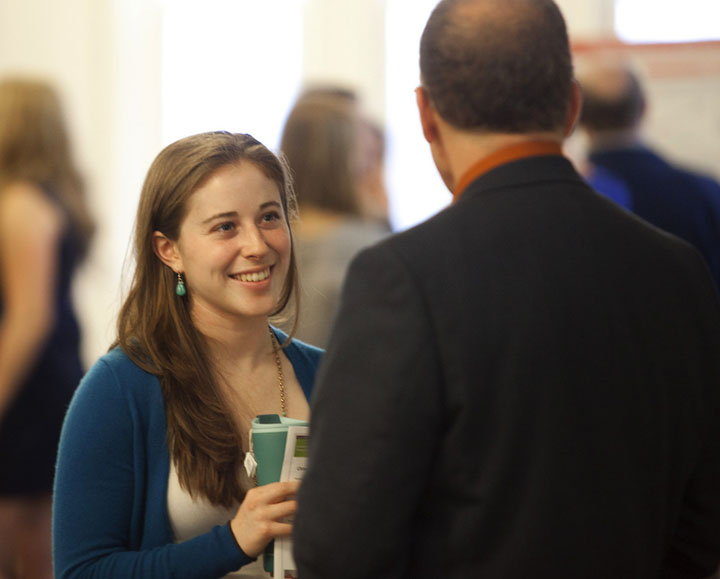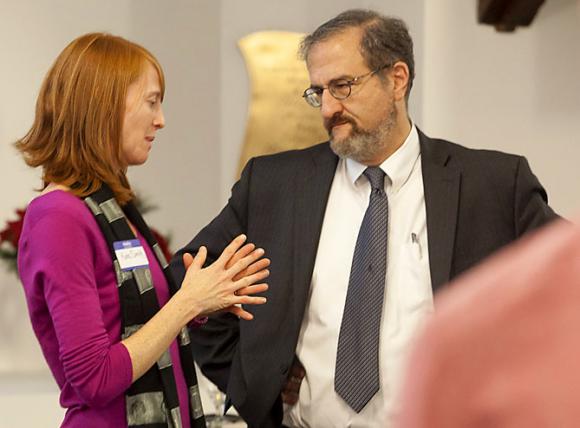PROVIDENCE, R.I. [Brown University] — Katherine Smith’s students had to wait until they came to Brown University to learn how climate change could affect human health. Now that Smith and her fall semester class have developed a rich new curriculum on the subject for high school teachers, future 10th to 12th graders might not have to wait so long.
The curriculum, a nine-module set of backgrounders, lecture notes and suggested lesson plans and classroom activities, is now available for free download. In 180 total pages, it covers topics ranging from an overview of climate change to more specific units such as how global warming could affect infectious disease, allergies, and the global food supply.

Jessica Fields, a junior concentrating in health and human biology with a focus on environmental justice, said she and her 14 classmates decided to produce materials to support high school teachers because they wished they had learned lessons like these a little earlier.
“The health implications of climate change and all these interacting factors were not necessarily touched on,” Fields said. “Providing teachers with some sort of resource to help them put together their own units was very exciting.”
Each week Smith assigned readings and the class gathered for hours to discuss them. Students teamed up in pairs to create each module. Fields, for example, focused on controversy around whether certain species should be relocated to more suitable habitats as climate change makes their natural habitat inhospitable. The practice might help species avoid extinction, but could also import new diseases to places where they didn’t exist before.
Teacher-reviewed content
Smith, assistant professor of ecology and evolutionary biology, and her students knew if they were to presume to develop a high school curriculum with real classroom value, it could only be done with the input and critical review of teachers. They got just that from David Upegui, a science teacher at Central Falls High School, and Vicki Santos Silva, a teacher and director for teacher education at Breakthrough Providence, an educational nonprofit housed at the Wheeler School.
“We understood from the beginning that none of us are teachers, and teachers are the experts in educating high school students,” Fields said. “We were focusing on providing background information and all sorts of resources and then we provided suggestions on how to present the material, but we didn’t want to give teachers a script.”
Upegui emphasized that high school classroom learning has been moving away from one-way lectures to emphasize more a more participatory learning style. He therefore suggested that Smith’s class include not only background for lectures, but also ideas for classroom warm-ups, in-class activities, and ways for teachers to assess learning.
“What I offered them was how to format it so it’s more friendly for teachers,” he said. “The depth and the content were already there. It was just organizing it in a way that was a little more applicable immediately.”
For example, the curriculum had to be modular, he said, so that teachers could fit the material into what they already teach to meet their district or state’s curriculum requirements.
One of Upegui’s classes is an anatomy course, so he was particularly keen on the module on allergies. In that one, the students suggest that teachers convene their students in a medical mini-conference — complete with name tags — where the high schoolers would take on the role of allergy specialists. To their assembled colleagues they’d present their findings about the potential impact a warmer, wetter, or drier climate could have on their particular chosen or assigned allergy (e.g., pollen or mold). The activity not only provides a way for students to become especially engaged, but also it provides teachers with a means for assessing what the students have learned.
In the module on relocating species, Fields and fellow junior Tram Bui suggest splitting high school classes into the pro and con sides of the idea for a debate.
It isn’t surprising that the students in Smith’s class were receptive to the feedback of suggesting lively activities. The Brown class itself was based on that premise.
“When I designed this class I didn’t want it to be a class, I wanted it to be a studio where students learn by doing,” Smith said.
Now the students hope their curriculum will inspire more active learning about climate change and health.
Two academic programs of Brown University, the Global Health Initiative and the Environmental Change Initiative, jointly sponsored the course.

